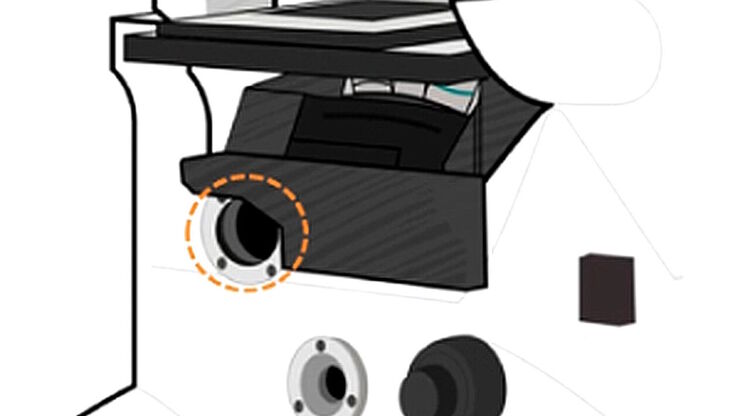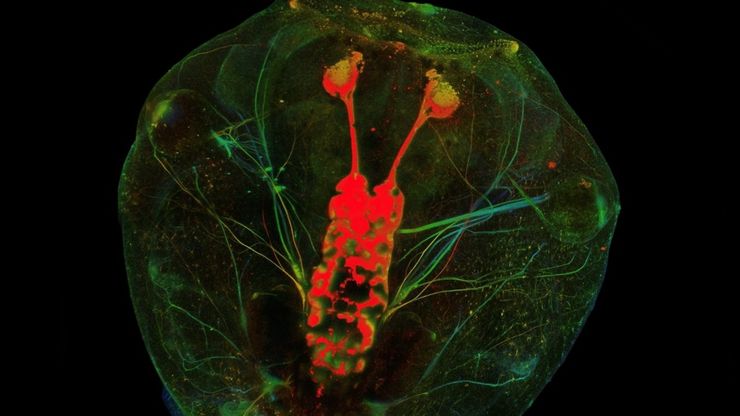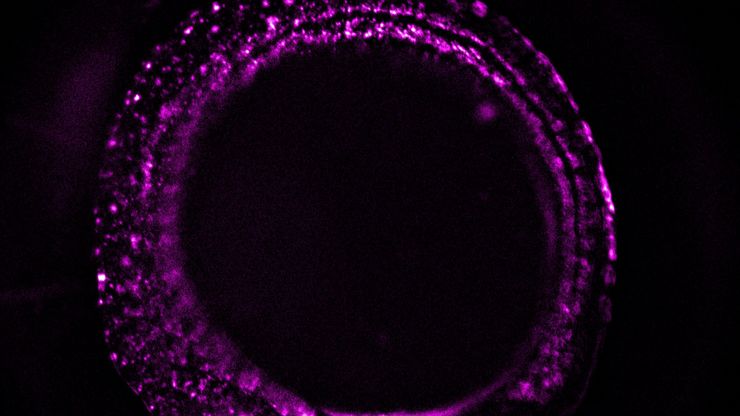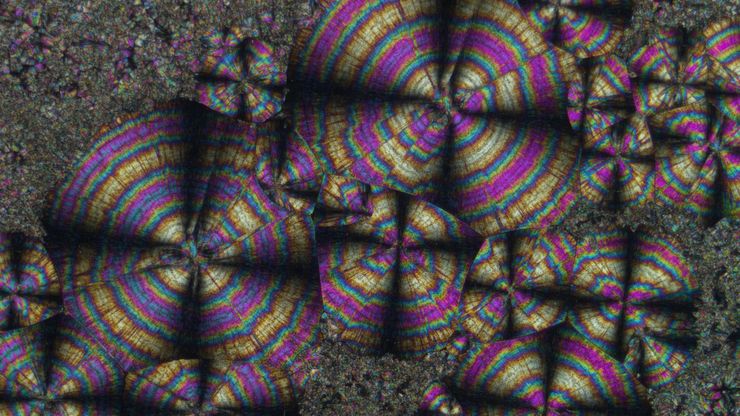无限远光学系统
“无限远光学”这一概念是指在显微镜的物镜和镜筒透镜之间具有平行光线的光束路径。平面光学元件可以进入到这个“无限远空间”中,而不影响成像,这对于利用DIC或荧光等对比度方法至关重要。
现代显微技术需要在无限远光路中添加多种光学仪器,如光源或激光装置。满足这一需求的不同方法已经出现,本文对其进行了描述。
空间蛋白质组学的突破如何拯救生命
中毒性表皮坏死溶解症(TEN)是一种罕见的、但对抗生素或痛风治疗等常见药物的破坏性反应。这种疾病开始时并无大碍,通常只是皮疹,但会迅速升级为大面积皮肤脱落,类似于严重烧伤。尽管 TEN病情十分严重,但其基本机制仍然难以捉摸,治疗方案也仅限于支持性护理。TEN 的死亡率高达 30%,长期以来一直是临床医生的噩梦,直到现在才有了靶向疗法。
基于激光的视神经再生研究新方法
由于哺乳动物中枢神经系统(CNS)的自我修复能力有限以及传统损伤模型的不一致性,视神经再生是神经生物学的一大挑战。相比之下,爪蟾蝌蚪的视神经在受伤后可以再生,因此是研究轴突再生的分子和细胞机制的理想模型。在本应用说明中,我们展示了如何利用激光显微切割技术(LMD)对蝌蚪的视神经进行精确、一致的横切,从而开发出适合成像、转录组分析和功能恢复研究的高重复性损伤模型。
如何为深层肌肉组织中的轴突再生成像
这项研究重点介绍了亚伦-李(Aaron Lee)博士对截肢后肌肉移植中神经再生的定位研究。肢体缺失通常会导致生活质量下降,这不仅是因为组织缺失,还因为轴突再生紊乱引起的神经性疼痛。Mica组织学成像和荧光成像可帮助了解神经再生过程中轴突的生长和分支这项研究有助于塑造未来的神经假体接口设计,改善患者的治疗效果。
神经科学研究指南
神经科学通常需要研究具有挑战性的样本,以便更好地了解神经系统和疾病。徕卡显微镜可帮助神经科学家深入了解神经元的功能。
利用快速高对比度成像改进斑马鱼-胚胎筛查
通过这篇文章,您可以了解如何利用 DM6 B 显微镜的高速、高对比度成像技术促进转基因斑马鱼胚胎的筛选,从而确保发育生物学研究的准确定位。
揭开类器官模型在生物医学研究中的秘密
准备深入了解类器官和3D培养物的世界,它们是促进我们了解人类健康的重要工具。浏览这些复杂的结构并获取清晰的图像进行分析是一项挑战。在本次活动中,来自牛津大学和伦敦大学学院的研究人员将与我们一起展示Thunder Imager Cell转盘共聚焦系统 如何提供更有说服力的高质量数据,以便深入了解各种模型。
偏振光显微镜指南
偏振光显微镜(POL)可增强双折射材料的对比度,在地质学、生物学和材料科学中用于研究矿物、晶体、纤维和植物细胞壁。
如何形成清晰的图像
在显微镜检查中,景深常被看做经验参数。在实际操作中,会根据数值孔径、分辨率和放大率之间的相关性确定该参数。为了获得最佳视觉效果,现代显微镜的调节设备在景深和分辨率之间实现了最佳平衡,这两个参数在理论上呈负相关。










